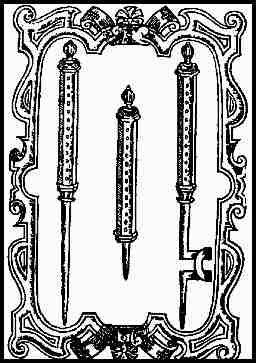Present in literature and trial reports from the 16th century onward, a devil mark was the physical sign of a witch’s contract with the devil.
Often confused with “Witch marks” (physical abnormalities on the body such as an extra nipple or teat), the presence of a devil mark or seal was a popular way of establishing the guilt of a witch. Any discolouration or blemish of the skin was suspect – the unfortunate presence of birthmarks, moles and scars was seen as instant confirmation that the witch had made a pact with the devil.
The mark was believed to be caused by the devil’s claws or a hot iron used for the purpose of branding the witch. There is also mention of the devil licking a witch in order to mark her. The marks were often applied to secret places to avoid detection; under the eyelids and inside creases or cavities of the body were among the locations frequently cited.
Suspected witches were shaved all over in order to locate the mark, with such searches often conducted in public in front of large crowds. There was a belief that a “natural” mark would be easy to distinguish from the mark of the devil, and therefore any protests that a discovered mark was natural were often ignored.
Once a mark was discovered, guilt was confirmed by testing whether the mark would bleed or feel pain. A needle was inserted into the mark; a lack of blood or feeling marked the end for many suspected of witchcraft.
Theories for the origins of devil marks include tattoos of allegiance to an organised pagan religion in the middle ages, folk belief established over time, and lyme disease.



